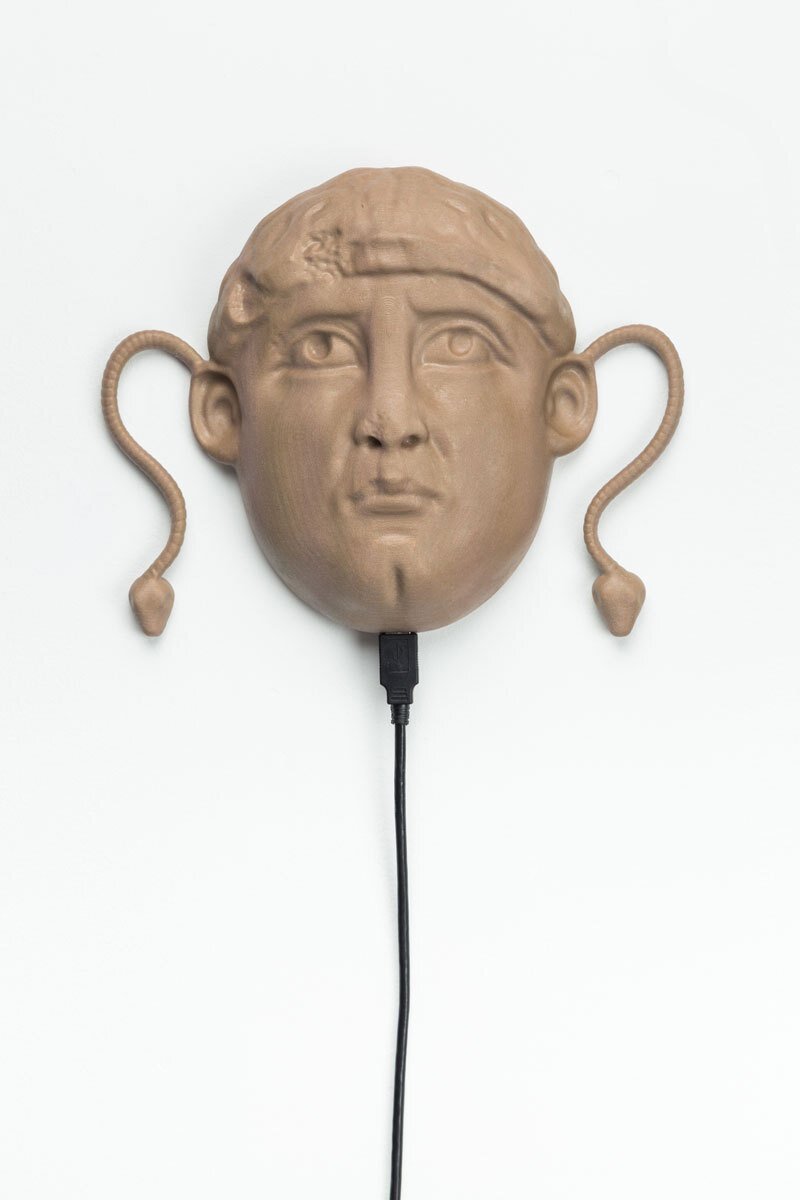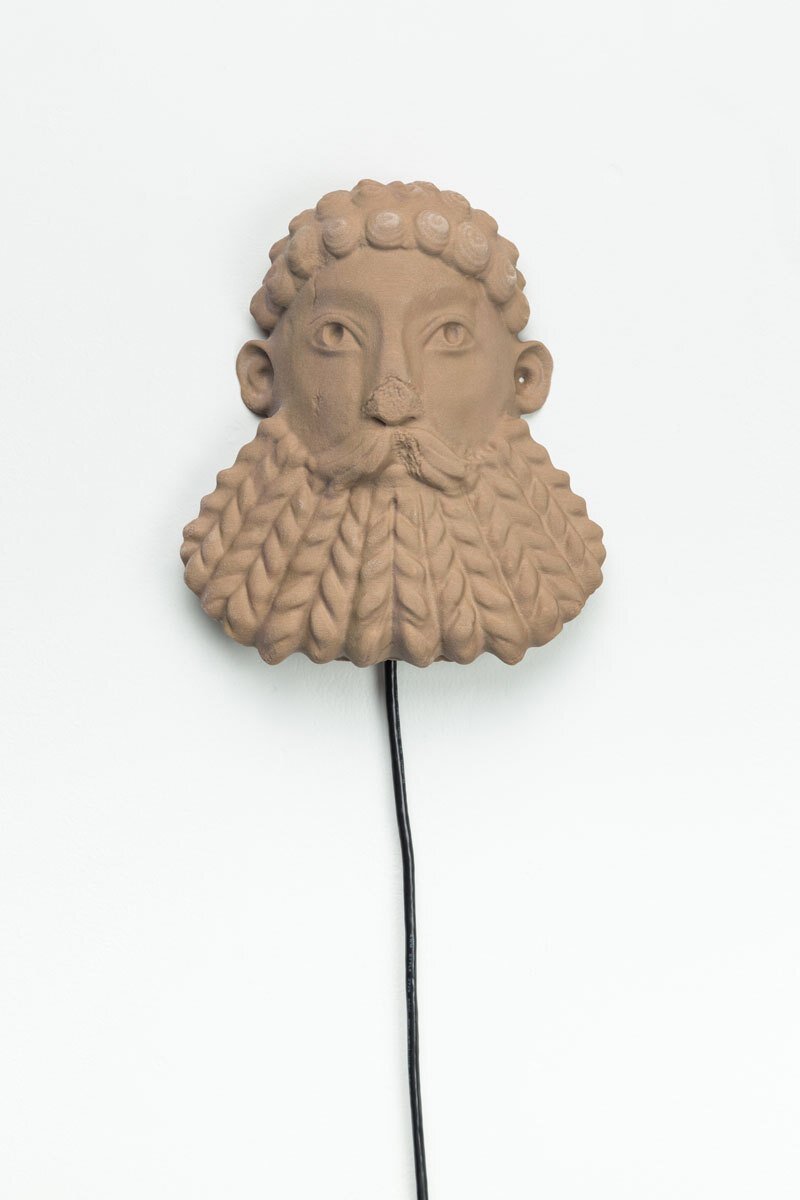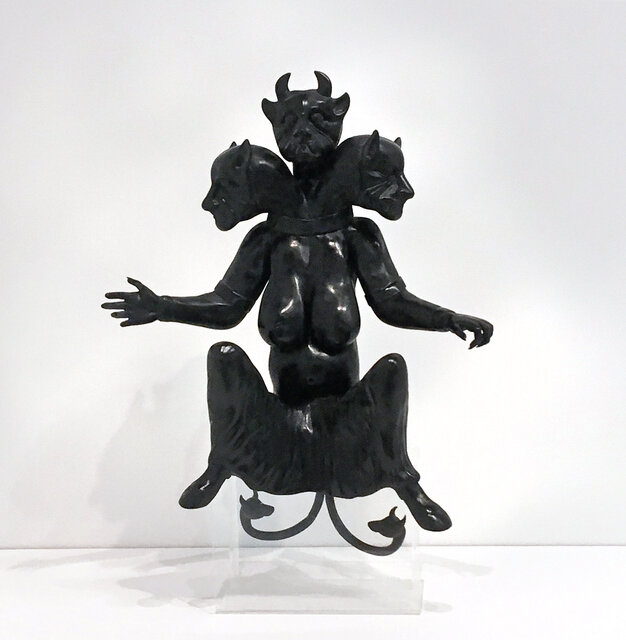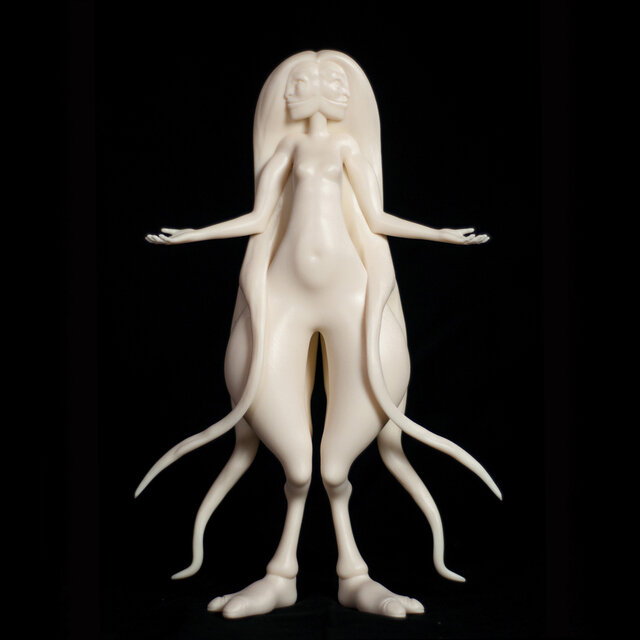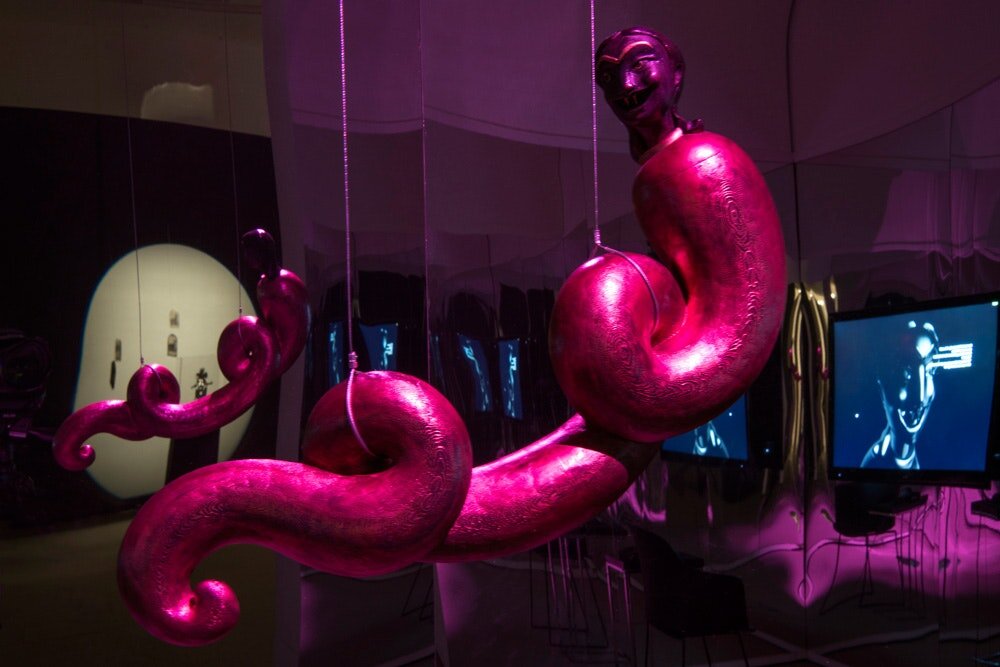Material Speculation: ISIS – King Uthal
In February of 2015, the radical Islamic group ISIS released a video of various members taking a sledgehammer to sacred relics at the Mosul Museum in Mosul, Iraq. As the video’s narration stated,
“These statues and idols, these artifacts, if God has ordered its removal, they became worthless to us even if they are worth billions of dollars.”
Image courtesy of https://www.ngv.vic.gov.au/exhibition_post/the-distributed-monument/
This hasn’t been the first or the last time that ISIS destroyed precious artifacts they perceived to be idolatrous, but this instance was the one that inspired Morehshin Allahyari’s collection Material Speculation: ISIS.
Allahyari is a self-described “artist, activist, writer, and educator,” born in Iran in 1985. She graduated from Tehran University in Tehran, Iran in 2007 with a Bachelor of Arts in Social Science and Media Studies. She then moved to the United States and earned a Master of Arts in Digital Media Studies from the University of Denver in 2009 and a Master of Fine Arts in New Media Art from the University of North Texas in 2012. In the time since she received her MFA, Allahyari has shown work across the world, produced acclaimed collections such as She Who Sees The Unknown, and been named a leading global thinker by Foreign Policy Magazine in 2016. Allahyari’s politically and socially conscious perspective has informed her work, setting her apart from other contemporary artists. One of the collections she is most well known for is Material Speculation: ISIS.
Image courtesy of https://framerframed.nl/wp-content/uploads/2017/04/FramerFramed_As-If_038%C2%A9EvaBroekema_small.jpg
Through comprehensive research and collaboration with historians, museum staff, curators, and archaeologists, Allahyari managed to gather enough information to recreate artifacts lost at Mosul in CAD. She assembled the collection Material Speculation: ISIS by 3D printing twelve of these artifacts in translucent plastic resin, each more polished and translucent than the last. Encased in the resin body of each reconstruction is a flash drive or a memory card, holding the fruits of Allahyari’s research, including photos and videos of the original artifacts, as well as the print-ready models of each. One of these reconstructions is King Uthal.
King Uthal depicts a man in royal Hatrene garments holding up his right hand over his shoulder and resting his left hand on the handle of his sword, still in its sheath. King Uthal stands at one foot tall and, as the first in the series, is the most opaque. The entire figure, including its quilted tunic and conical headpiece, is a hazy purple-grey plastic, obscuring the flash drive held inside. King Uthal is the only piece whose 3D model has been made available to the public. Allahyari released this information, as well as other research pertaining to the piece, in February of 2016 as part of digital art collective Rhizome’s The Download series. She has not released any such information regarding its companion pieces. In an interview with Artsy.net, also in February of 2016, Allahyari stated,
“In the coming months, I am going to release all the .stl/.obj files (3D-printable files) online for public access… I think there is something very important about sharing this project. The more people 3D-print these, or even keep them as digital files… or read about the history of the artifacts—the more we have collectively resisted the act of forgetting.”
However, these files were never released.
In September of 2017, Allahyari shared with online art publication Unthinking Photography that she
“realized that there was a huge spike in the act of reconstructing artifacts in Europe and the U.S. in parallel with their destruction in Iraq and Syria,”
which she characterized as an act of “Digital Colonialism.” Allahyari explains that
“Removing an artifact damaged by ISIS from its complex context and history...only reinforces the narrative of Western society as ‘civilized’ and Muslim societies as ‘barbaric terrorists’.”
Despite its cultural foundation in the Middle East, King Uthal has been reprinted in disproportionately Western countries. For this reason, Allahyari intends to eventually release the collection of resin sculptures to a Middle Eastern institution and, presumably, will not make the files available for public download until she has done so.
That being said, public access to the files is still Allahyari’s end goal. While ISIS’s intention in destroying the “idolatrous” works could be attributed to suppression and condemnation of a particular type of thought, Material Speculation: ISIS directly protests this by publishing information about the works across the globe and enabling their recreation. Thanks to Allahyari’s project, it can be argued that ISIS’s attempts to erase these artifacts have actually, in turn, made them more well-known.
Material Speculation: ISIS is not Allahyari’s only piece that explores the publication and proliferation of artifactual research. Dead Drops (2017) and She Who Sees the Unknown (2016-present) also explore this idea, Dead Drops being an informal extension of the Material Speculation: ISIS series. Dead Drops consists of three more reproductions, this time of sculpted heads that ISIS destroyed at the ruins of Hatra. Each head contains a USB drive from which research files can also be downloaded. Allahyari intends the Dead Drops to eventually be available as download stations in public places outside of museums and galleries, further aiding the proliferation of the research.
Similarly, Allahyari has compiled research on female and queer djinn and monsters from Middle Eastern mythology and synthesized ancient illustrations into 3D models of each creature for her project She Who Sees the Unknown. The resulting models are presented in shrine-like environments, and the exhibition is always accompanied by a “reading room,” where museum patrons can read the folktales and documents about each djinn, allowing them to build a more personal relationship with the collection. Allahyari makes a point in all three of these series to inform a broader public about artifacts and stories that have not garnered deserved notoriety, whether that is because they come from the Middle East or because the key players are women.
Morehshin Allahyari’s Material Speculation: ISIS is a complex and thought-provoking series. When the pieces are first encountered, they may seem lackluster, but upon further research, Allahyari’s genius can be better appreciated. The amount of work put into the series was clearly a serious undertaking, making its message even more powerful. Material Speculation: ISIS is not only an extremely clever form of peaceful protest against ISIS, but also touches on other pressing issues. As an American audience, it is imperative to consider the implications of one’s privilege in relation to the piece. While this particular collection was restored by an Iranian artist, the majority of Middle Eastern art is restored in the West in an act that becomes white saviorhood regardless of intention. The artist’s nationality aside, anyone viewing the work should take a moment to reflect on the thousands of Iranian people, living and dead, who do not have access to this piece of their own culture.
Sources:
https://news.artnet.com/art-world/iraqi-troops-reclaim-mosul-museum-destruction-isis-revealed-889124
http://www.morehshin.com/artist-information/
http://www.morehshin.com/material-speculation-isis/
http://shewhoseestheunknown.com/
https://framerframed.nl/en/mensen/morehshin-allahyari/
https://www.cbsnews.com/news/isis-mosul-museum-ruins-iraq-forces-advance/
https://www.phaidon.com/agenda/art/articles/2018/july/11/can-tech-bring-back-lost-art/
https://www.cnn.com/2014/08/08/world/isis-fast-facts/index.html
https://www.cnn.com/2015/03/09/world/iraq-isis-heritage/
https://2016globalthinkers.foreignpolicy.com/2016/profile/morehshin-allahyari?3fa4cfa909=
https://etc.ancient.eu/education/destruction-mosul-museum/
https://www.artsy.net/article/artsy-editorial-an-iranian-artist-is-using-3d-printing-to-combat-isis
http://digicult.it/news/spread-what-has-been-destroyed-interview-with-morehshin-allahyari/
https://anthology.rhizome.org/material-speculation-isis
https://unthinking.photography/articles/interview-with-morehshin-allahyari
https://en.wikipedia.org/wiki/Morehshin_Allahyari
http://rhizome.org/editorial/2016/feb/16/morehshin-allahyari/
Allahyari, Morehshin, and Laleh Mehran. “Art and Activism: Communicating Across Cultures in the Middle East.” Presentation, University of Denver, Denver, CO, February 12, 2020.
Abreu, Manuel Arturo, Josephine Bosma, Megan Driscoll, Ceci Moss, Lila Pagola, Paul Soulellis, and Elvia Wilk. The Art Happens Here: Net Art Anthology. Edited by Michael Connor, Aria Dean, and Dragan Espenschied. New York: Rhizome, 2019.



